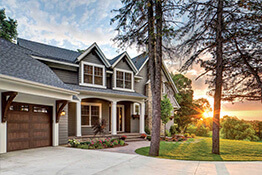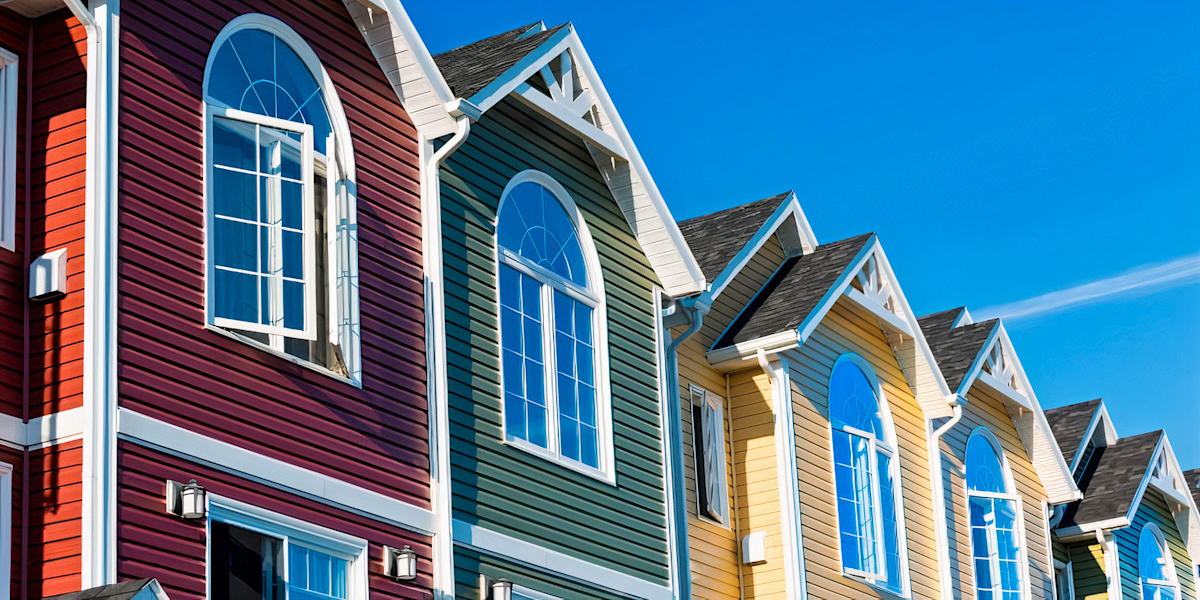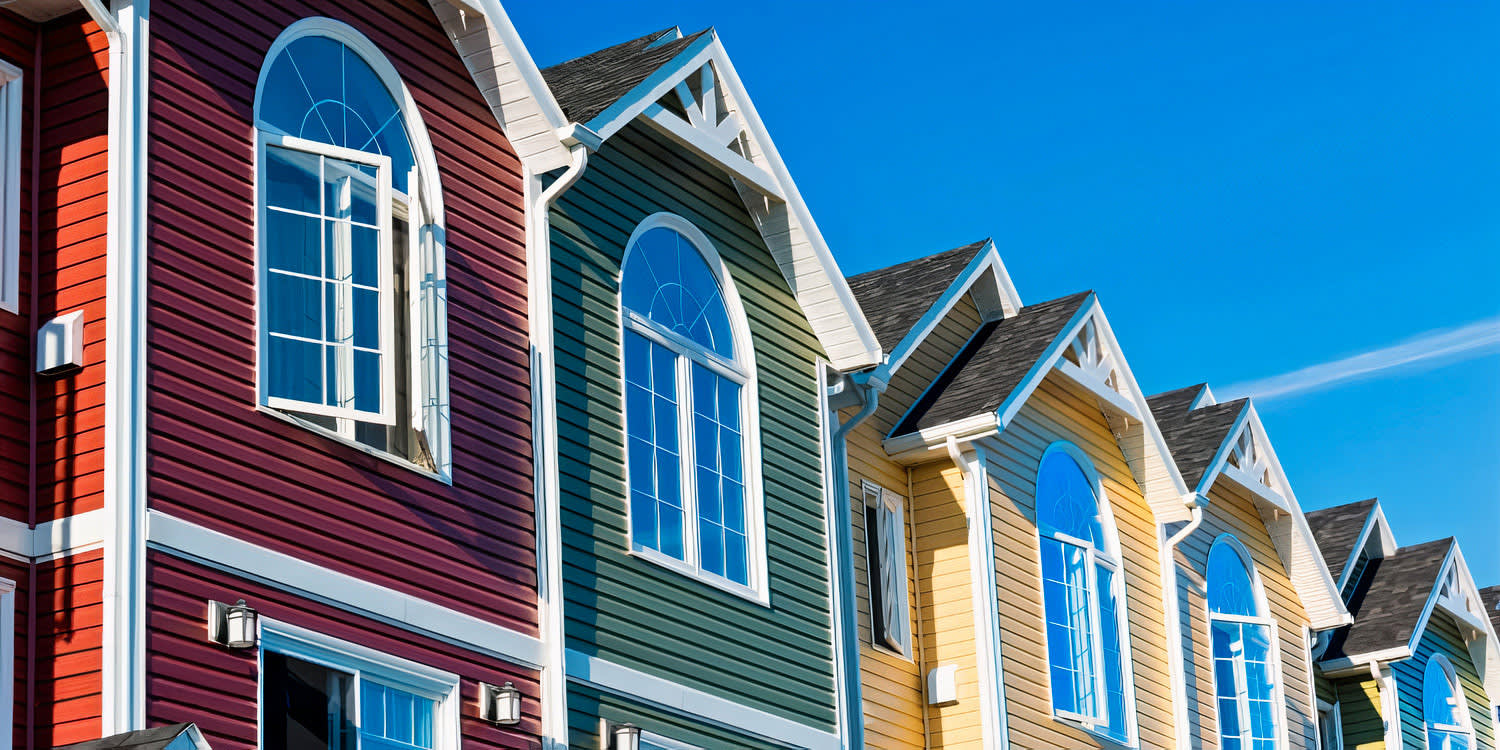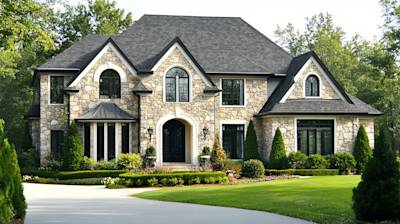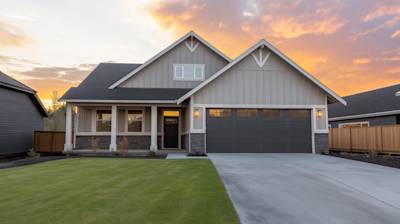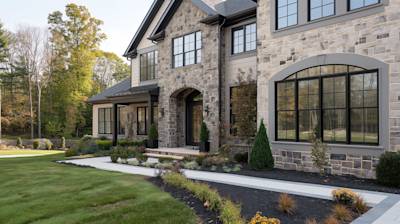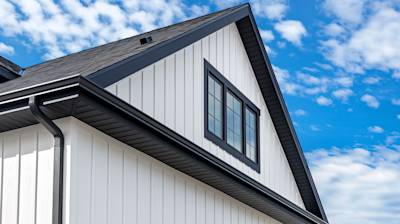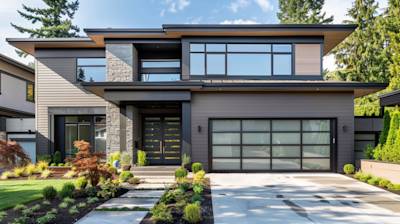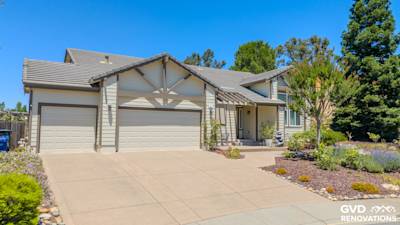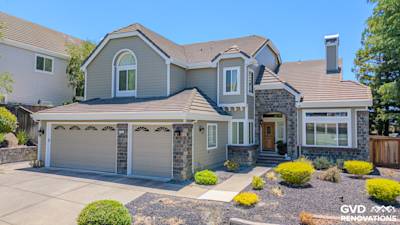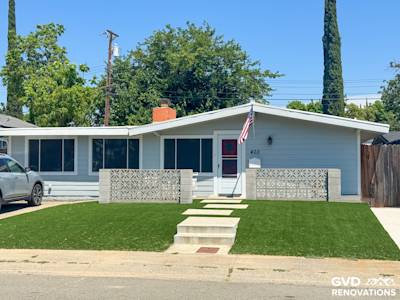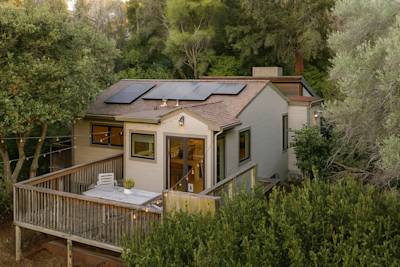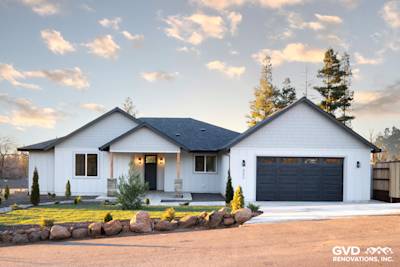When designing or renovating your home, one of the most significant choices you'll make is the color of your siding. Whether you go for a timeless neutral or a bright, attention-grabbing hue, your choice will form the foundation of your home's exterior design. In this article, we'll guide you through the wide variety of siding colors available and help you pick the perfect color for your home.
Understanding the Basics of Siding Colors
Before we dive in, it's essential to understand the role that siding color can play in your home's appeal. Whether you're planning to stay in your home for years to come or thinking about selling, the color of your siding can significantly influence its aesthetic appeal and resale value. With that in mind, it's no surprise that homeowners spend considerable time and effort picking the perfect hue.
Neutral Siding Colors
Neutral siding colors include hues like white, beige, and gray. These shades offer enduring charm and appeal. They lend themselves well to a wide range of exterior home styles and are usually a safe bet if you're worried about resale value.
Bold Siding Colors
If you're feeling adventurous and prefer a vibrant exterior, bold hues such as red, blue, green, or yellow can make a striking statement. However, consider local regulations and neighborhood aesthetics before choosing a bold color, as some homeowners' associations may have guidelines on acceptable siding colors.
Finding Your Perfect Siding Color
Now that we've covered the basics let's explore how to pick the perfect siding color for your home. There is no one-size-fits-all answer here, as the best color for your home depends on a range of factors including your personal taste, the style of your house, and the colors of surrounding homes.
Take Inspiration from Your Home's Architecture
The architectural style of your home can inform your choice of siding color. For example, a modern home might suit bold, contrasting colors, while a period-style home might look best in more subdued, traditional hues. It can be beneficial to research homes similar to your own to see which colors work best.
- Victorian homes often look stunning in a combination of three or more colors
- Colonial-style homes traditionally feature white siding with black or dark green shutters
- Craftsman-style homes often feature earthy colors such as brown, green, or taupe
Coordinating with Your Roof and Accent Colors
Many homeowners choose their siding color to complement their roof or accent elements. A harmonious exterior color palette can enhance curb appeal and add value to your home. Keep in mind that your roof will last for several decades, so it's important to pick a siding color that goes well with your roof color.
Considering the Impact of Sunlight
The way color appears can change depending on lighting and orientation. Colors might appear stronger and more vibrant south-facing property, while they might appear darker and more muted in low light. Consider your home's orientation and how it is affected by sunlight throughout the day when making your decision.
Caring for Your Siding Color
Once you've chosen your perfect siding color, you'll want to know how best to care for it to keep it looking fresh. Different siding materials require different levels of care and maintenance for their color to remain vibrant. Whether you choose vinyl, wood, or fiber cement, understanding how to care for your siding will help you keep it looking great for years to come.
Vinyl Siding
Vinyl siding is relatively low maintenance, with color that is baked-in during manufacturing, reducing the risk of fading. With vinyl siding, a simple cleaning once a year with mild detergent is usually enough to keep the siding looking its best.
Wood Siding
Wood siding provides a timeless, classic look but requires more maintenance to keep the color looking vibrant. Wood needs to be repainted or re-stained every few years, especially in areas with harsh weather conditions.
Top-rated Sacramento Fiber Cement Siding
Fiber cement siding can mimic the look of wood with less maintenance. This versatile material can be painted any color, allowing for maximum customization. However, just like vinyl siding, it can benefit from regular mild cleaning.
In conclusion, regardless of what color you choose for your siding, remember that this will form a significant part of your home's curb appeal and can increase or decrease its market value. Therefore, it is crucial to consider all factors thoroughly before making a final decision.
Frequently Asked Questions About Siding Colors
What are some popular siding colors?
There are several popular siding colors to choose from. The traditional favorites include shades of white, gray, blue, and green. Other colors such as brown, cream, red, and even black are also prevalent. The choice of siding color tremendously depends on your personal taste and may also need to blend with the neighborhood environment.
Does siding color affect the house’s temperature?
Yes, the siding color can influence the home's temperature. Darker shades tend to absorb more heat, potentially raising the temperature inside your home during sunny days. Conversely, lighter shades can help reflect heat away, which could help keep your home cooler. However, the actual temperature impact might be minimal and also depends on other factors, like your home's insulation.
Can I paint my vinyl siding a different color?
Yes, you can paint your vinyl siding a different color, but be sure to use paint specifically designed for this type of material. Vinyl siding expands and contracts with temperature changes, so the paint needs to do the same to avoid cracking or peeling.
Does siding color fade over time?
Yes, siding color can fade over time due to weather exposure and the sun's ultraviolet rays. However, this largely depends on the material and the quality of the siding. Higher quality materials and finishes often come with warranties that protect against color fading.
How can I choose the right siding color for my home?
Choosing the right siding color depends on several factors, including your home's architecture, the color of your roof, and the palette of your neighborhood homes. You might also want to consider potential restrictions in your neighborhood regarding exterior colors. Always consider coordinating with other existing colors on your property such as windows, doors, trims, etc.
Can siding color impact the resale value of my home?
Absolutely! The color of your home can significantly affect its curb appeal, which in turn influences its resale value. Neutral colors typically have broader appeal to potential buyers. However, a well-chosen, tastefully applied bold color can also make a home stand out in a positive way.
Do dark siding colors require more maintenance?
Dark siding colors can indeed require more maintenance as scratches, dust, and other imperfections tend to show more prominently. They may also fade quicker due to more heat absorption. It's crucial to clean and maintain darker siding properly to keep it looking its best.
Is it possible to mix and match siding colors?
Yes, you can mix and match siding colors to create a unique and appealing look. Many homeowners choose to use one color for the majority of the home and then use a different color for accents and trim. This can help create architectural interest and elevate the overall aesthetic of your home.
Are there upcoming trends in siding colors?
Indeed, just like any other aspect of home decor, siding colors have trends too. Recently, warmer tones, such as browns and creams, are gaining popularity. Likewise, bold colors like navy blue and forest green are trending as well, especially for homes with a modern design. Always consider balancing trendy and timeless colors to create a lasting appeal for your home.
Should siding color match the roof color?
The siding color does not necessarily have to match the roof color, but it should coordinate. For instance, a gray or black roof often pairs well with blue, green, or white siding. For brown or tan roofs, consider cream, beige, or even a contrasting shade like blue or green. Your choice should also depend on the architecture and style of your home.
Pros and Cons of Different Siding Colors
When it comes to selecting the right siding color for your home, there is a myriad of options to choose from. Below we will discuss the Pros and Cons of different siding colors in great detail.Pros of Choosing Light-colored Siding
Versatility
- Light-colored siding such as white, cream, and sand tones offer a high level of versatility. They can blend well with any type of architectural style and landscape design.
- These colors effortlessly complement other elements of the home, including the roofing, doors, and windows.
Heat Reflection
- Light colors are known to reflect sunlight. Hence, these shades can help keep your home cooler during the hot summer months. This might result in lower energy costs for air conditioning.
Aesthetic Appeal
- Light tones also have a classic appeal that stands the test of time. White in particular, can give your home a crisp, clean look.
Cons of Choosing Light-colored Siding
Maintenance
- Light-colored siding tends to show dirt, grime, and stains more readily. Thus, homes with this color may require more frequent cleaning and maintenance.
Limitations in Design
- While light colors offer versatility, they may not provide the bold look that some homeowners desire. Dark or vibrant siding colors may make a stronger design statement.
Pros of Choosing Dark-colored Siding
Distinctive Look
- Dark siding color tends to stand out more, creating a distinctive and modern look. Blacks, grays, and deep blues can give your home a dramatic and high-contrast appearance against the landscape.
Hides Dirt and Stains
- Dark colors can hide dirt, dust, and stains better than light colors. This can mean less frequent cleaning.
Cons of Choosing Dark-colored Siding
Absorbs Heat
- Dark siding colors can absorb a great deal of heat. This could mean your house might heat up more in the summer months, potentially leading to higher cooling costs.
Fading
- Dark siding colors can fade over time due to continuous exposure to sunlight. This may result in inconsistent coloration.
Pros of Choosing Vibrant Siding Colors
Personalization
- Vibrant siding colors such as reds, greens, or blues allow homeowners to express their personal style and make their home stand out.
Accentuates Architectural Features
- Vibrant colors can highlight certain architectural features of your house, giving it a unique character.
Cons of Choosing Vibrant Siding Colors
May Overwhelm the View
- Vibrant siding colors can overwhelm the view and conflict with the surroundings if not paired correctly with other exterior home elements.
Resale Considerations
- Homes with vibrant siding colors may be harder to sell as they reflect personal style and may not appeal to a broad range of buyers.
Summary
Choosing the right siding colors is a task that requires careful consideration and meticulous planning. Be it for renovation or for a new construction, the siding color has a significant influence on the overall aesthetics of a home. Therefore, with the diverse range of hues available in the market, it's on you to select the one that catifies your preference and accentuates the architectural beauty of your home.
Remember, your views on the ideal siding colors might evolve over time, but envisioning how they might impact your home's appearance in different weather conditions or light settings can help you make a well-informed decision. Ideally, combine colors that add depth and character to your home. Needless to say, the significance of choosing the right siding color cannot be overstated.
Finally, irrespective of what siding colors you decide upon, what matters the most is that they should harmonize well with other outdoor elements such as roof, landscape or doors. So take your time, peruse through the assortment of siding color options, consider the surrounding environment and pick what works best for your home. It's not something you're likely to do often, so make sure your color choice is one you'll appreciate for years to come.
About GVD Renovations & Remodeling
Welcome to GVD Renovations & Remodeling, your reliable, local renovation expert based in Sacramento, CA. With our blend of expertise, dedication, and superior craftsmanship, GVD renovations has become a trusted name in delivering high-quality home and commercial remodeling services. No project is big or small for us - our brilliant team of skilled professionals is always ready to transform spaces to your liking while ensuring every detail is perfect. We pride ourselves on exceeding customer expectations with quality work, timely completion, and maintaining open communication throughout the process.
This article is for general information only and not professional advice. Always consult a licensed contractor before making project decisions. Product details, specifications, or warranties may have changed since publication. Brand and product mentions reflect opinion, not endorsements or guarantees.
Tags: siding colors, home renovation, exterior design,
